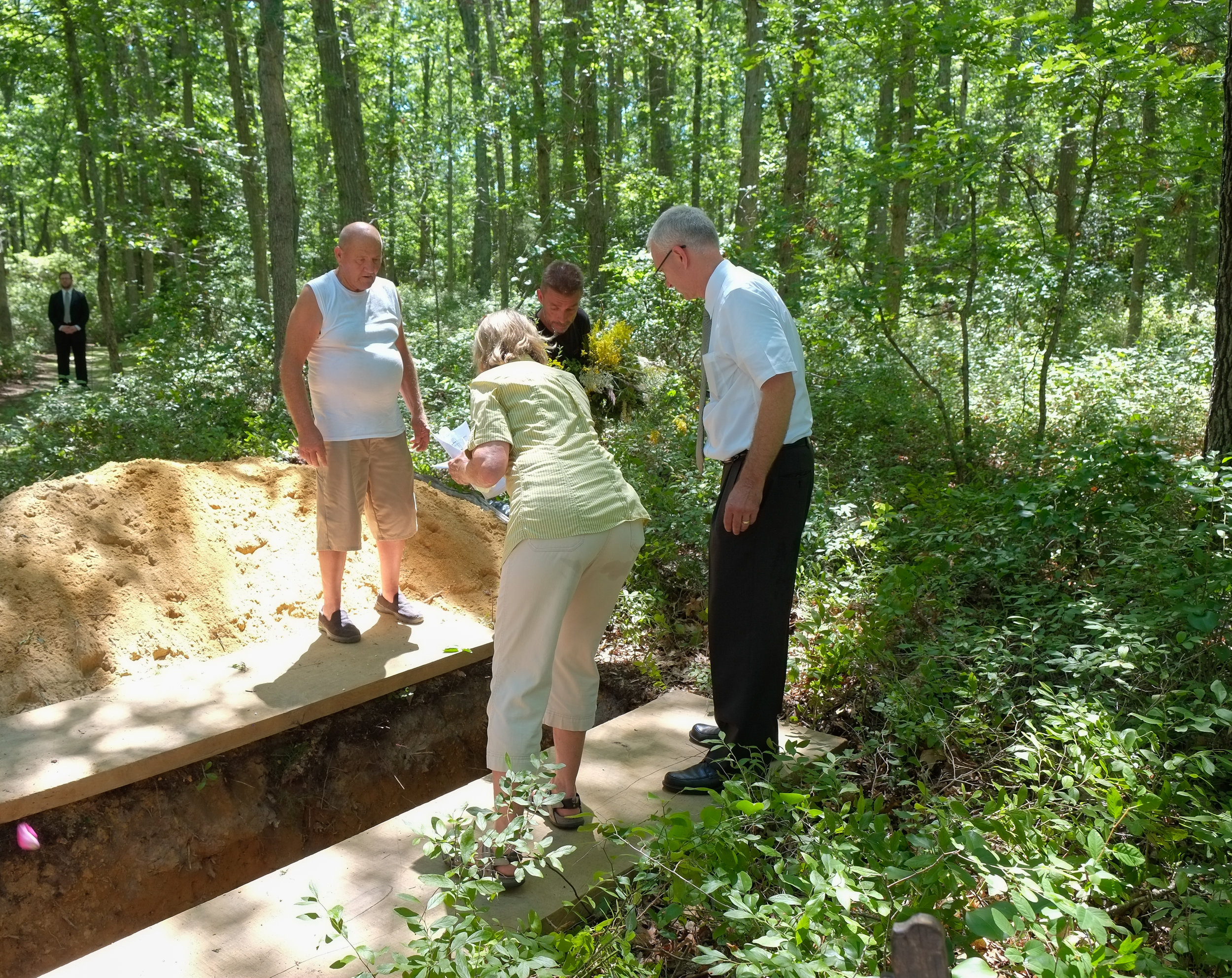The last time I wrote about soil it was to extol what it could do to the space above a dead body; i.e., act as a smell barrier. The second wondrous thing is what it does below. This is vital to understand, as after the shallowness of green burial graves, worry about contaminating a water supply ranks high as a reason to hobble efforts to develop a natural burial cemetery.
Take Resh Mill Preserve as an example. Doug Caroll and Deirdre Smith developed plans for a conservation burial ground on 66 acres, 30 minutes from downtown Baltimore. The land was old farm and pasture in need of restoration; something that natural burial, and conservation burial in particular, is good at. They would institute all the usual principles; no embalming, no burial vaults, biodegradable burial containers only. Graves would have to be machine dug because the soil is rocky, and markers would be flat fieldstone.
"We looked for the right piece of land for ten years," said Deirdre, and they thought they'd found it. A land trust would have a permanent conservation easement on the property. The road up from the city is very peaceful with rolling hills, horses, cows, but the area is under intense pressure to develop for the growing suburban population.
Then in 2016 as they were hoping to begin burying, plans unravelled when the neighbors went to the county to stop it. Opponents' concerns focused on the safety of the streams and local drinking water, and protection of neighboring property values. In July Baltimore County Council passed Bill 50-15 to require any owner of land in the county wishing to develop a green cemetery to present the findings of a hydrogeologist--someone who determines the impact on nearby streams, wells and the local water table--to prove its impact would be acceptable. Ultimately this point became moot because zoning laws were changed to make it impossible to use the land for any cemetery at all.
What is at the heart of the fear of water contamination? Water supply issues always come up; it's one reason new cemeteries are hard to start; but they fuel fear of the unknown with natural burial cemeteries.
Water filtering through soil from rain or irrigation eventually reaches a water source--stream, underground aquifer, river. From there it finds its way into wells and reservoirs where we get our drinking water. Fear of a cemetery may be felt by neighbors who take water from their nearby properties or those who depend on a municipal water supply that can be affected by the cemetery. Historical cemeteries often predate the neighborhoods that surround them but like noisy highways, if you want to insert a cemetery of any kind, conventional or natural, into an existing neighborhood you have to meet requirements. States generally set separation distances for cemeteries and water sources; in New York it's 100 feet for a well. In North Carolina a new well can't be established less than 50 feet from a cemetery. Michigan sets the same distance for cemeteries as for septic tanks. New cemeteries must also dig test holes to determine how close water lies below the surface. Every effort is made to ensure that water coming from a cemetery doesn't reach a water source. That goes for conventional and green burial cemeteries alike.
But why is there a minimum distance set? If cemeteries are polluters, why are they allowed anywhere near habitation? Because of, you guessed it, the wonders of soil.
There are two types of pollutants that concern people: chemicals and diseases. Soil takes care of both by microbes, which are very good at breaking down or decomposing organic compounds. Wood, flesh, bamboo, cotton cloth. Burying a human body in a casket in a concrete vault is a good way of keeping out these microbes, though eventually everything will break down. The paint and varnish on expensive caskets are toxic but they aren't usually a problem because people who bury fancy caskets generally encase them in hermetically sealed vaults precisely to protect them.
Soil microbes are also very good at destroying pathogens that cause disease. They do this to protect plants from taking them up in their roots. The bacteria that decompose a body are not the same ones that make a person sick, and most bacteria and viruses don't survive the death of their host. In the case of infectious diseases that may survive it's unlikely that such a victim is going to be buried in a local cemetery, natural or otherwise. Embalming chemicals kill most pathogens but embalmers are exposed to any that don't.
So, about those embalming chemicals. Ever considered where they go? Into a dead body of course, but not all of the fluid stays inside and when the embalmer is working, the table holding the body is constantly flushed with water, which unabashedly goes down the drain and into--you guessed it--the water supply. About that water pollution...











